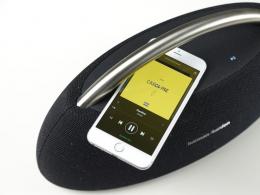How to change touchpad settings on a laptop. How to set up a touchpad on a laptop
Most laptops have a built-in touchpad that you can customize in Windows 10 to your liking. There is also the possibility of using a third-party device to control gestures.
Turning on the touchpad
The touchpad is activated via the keyboard. But if this method does not work, then you will have to check the system settings.
Through the keyboard
First of all, look at the icons on the F1, F2, F3, etc. keys. One of these buttons should be responsible for enabling and disabling the touchpad. If possible, look at the instructions that came with the laptop, it usually describes the functions of the main shortcut keys.
Press the hotkey to enable or disable the touchpad
On some models, key combinations are used: the Fn button + any button from the F list, which is responsible for turning the touchpad on and off. For example, Fn+F7, Fn+F9, Fn+F5, etc.
Hold the desired combination to enable or disable the touchpad
Some laptop models have a separate button located near the touchpad.
To enable or disable the touchpad, click on the dedicated button
To disable the touchpad, press the button that turns it on again.
Through system settings
Video: how to enable / disable the touchpad on a laptop
Gesture and sensitivity settings
The touchpad is configured through the built-in system settings:
Demanded gestures
The following gestures will allow you to completely replace all mouse functions with those of the touchpad:
- page scrolling - swipe up or down with two fingers;
Scroll up or down with two fingers
- moving the page to the right and left - swipe with two fingers in the desired direction;
Use two fingers to move right or left
- call the context menu (similar to the right mouse button) - simultaneously press with two fingers;
Press with two fingers on the touchpad
- call the menu with all running programs (similar to Alt + Tab) - swipe up with three fingers;
Swipe up with three fingers to open the application list
- closing the list of running programs - swipe down with three fingers;
- minimize all windows - swipe down with three fingers when windows are maximized;
- calling the system search bar or voice assistant, if it is available and turned on - simultaneously press with three fingers;
Tap with three fingers to call search
- zoom - swipe two fingers in opposite or equal directions.
Zoom with touchpad
Solving problems with the touchpad
The touchpad may not work for the following reasons:
- the virus blocks the operation of the touch panel;
- the touchpad is disabled in the BIOS settings;
- device drivers are corrupt, outdated, or missing;
- the physical part of the touchpad is damaged.
The first three points above can be corrected independently.
It is better to entrust the elimination of physical damage to the specialists of the technical center. Please note that if you decide to open the laptop yourself to fix the touchpad, the warranty will no longer be valid. In any case, it is recommended to immediately contact specialized centers.
Virus removal
Run the antivirus installed on the computer and enable full scan. Remove the found viruses, reboot the device and check if the touchpad is working. If not, then there are two options: the touchpad does not work for other reasons, or the virus managed to damage the files responsible for the touchpad. In the second case, you need to reinstall the drivers, and if this does not help, then reinstall the system.
Run a full scan and remove viruses from your computer
Checking BIOS settings
Reinstalling and updating drivers
Video: what to do if the touchpad does not work
What to do if nothing helped
If none of the above methods helped to fix the problem with the touchpad, then two options remain: system files are damaged or the physical component of the touchpad is damaged. In the first case, you need to reinstall the system, in the second - take the laptop to the workshop.
The touchpad is a handy alternative to a mouse, especially when all possible quick control gestures are explored. The touchpad can be enabled and disabled through the keyboard and system settings. If the touchpad stops working, remove viruses, check the BIOS and drivers, reinstall the system, or take the laptop in for repair.
When using the touchpad on a laptop, there are often problems with the comfort of use. Either the cursor twitches, then it moves quickly or vice versa, you need to move it many times to get to the “destination”. To eliminate this inconvenience, Windows 7 has mouse and touchpad settings that adjust sensitivity, precision, and other settings.
Adjusting the touchpad sensitivity on a laptop in Windows 7 is not a complicated procedure. Several steps will be required.
- Open Control Panel (Start -> Control Panel)
- In the window that opens, if at the top right is “Preview: Category”, then set “Preview: Large Icons”. This will make it easier to find the desired section in the Control Panel.
- Click on the Mouse section.
- In the window, there will be tabs at the top. You need to select the touchpad name tab or just TouchPad. In this tab, you can adjust the touch sensitivity.
- If there is no touchpad tab (the driver is not installed), then select "Pointer Options", there you can set the "Pointer Speed"
If you have any questions, you can always write to me at
The touchpad (touchpad) is a laptop detail that many users still use reluctantly to this day. However, if you even once use the high-precision touch panel, which is now installed on almost all modern models, your opinion will change radically. On modern panels, you can perform a lot of various functions:
- text selection;
- calling the context menu (in this case, you can not press the keys);
- page scrolling and much more - for this you need to know how to set up scrolling on the touchpad.
The only thing the user needs to know is how to set up the touchpad on a laptop with Windows 7, 8, 10 in order to make it as comfortable to use as possible.
Change sensor parameters
If you have Windows 10, then you need to do the following (for other operating systems, the changes are minor):

Important: if the panel is disabled, then it can be activated by pressing the "Activate device" button. So, now you know exactly how to set up a touchpad on Windows. 
How to disable the touchpad
If you have already tried setting up the touchpad on asus, acer, hp, lenovo and other laptops, but still using an optical mouse is much more convenient for you - in this case it would be advisable to disable the touchpad.
On Windows 8 and above, the sensor cannot be disabled by simply using the function keys - this is the main problem for many users. In order to resolve the issue, you need to do from 1 to 7 paragraphs of the instructions that were given above, after which we press the "Stop the device" button, and then - "Apply". If you want the sensor to stop functioning only when a mouse is connected, then you need to check the box next to the line "Disable when an external USB mouse is connected".
We hope that all the above recommendations will be relevant for you, and if necessary, you can easily enable / disable the touchpad without asking friends and acquaintances for advice. 
How to enable the touchpad on a laptop in Windows 10 if, after installing the system or updating it, it suddenly failed and there were problems with it? We suggest you familiarize yourself with several ways.
Most often, the problem with setting up the touchpad on windows 10 is due to the lack of software or the presence of “inappropriate” drivers that Windows itself installs. But there are other options as well.
To rule out stupid mistakes due to inattention, first look at the keyboard of your laptop. There should be quite understandable designation on the keys designed to turn the touchpad on and off:
Try first pressing any such key, or it, but in combination with the Fn button. It is likely that these measures should be enough to fix the problem.
On the most common laptop models - HP, Lenovo and Asus - there are the following combinations to enable the touchpad option:
- for Asus - Fn + F9 or Fn + F7
- for Lenovo - Fn + F8 and Fn + F5
For the HP brand, they came up with a separate key to control this function. And if it is not there, then press twice (or once, but for a long time) on the touch panel in the corner on the left.
Another option on how to set up the touchpad on a Windows 10 laptop: go to - Mouse. Perhaps it was disabled in the touchpad settings for some reason.
How to enable scrolling on touchpad Windows 10?
Lack of touchpad drivers is the most common reason why. The first thing to try is to install them manually, because sometimes the new software does not fit (the one that Windows installs itself), and the official "old" ones perfectly fix the problem. You can find the necessary drivers on your laptop manufacturer's website in the Support section by selecting the driver download for your model. If no suitable software is found for Windows 10, download drivers for version 8 or 7. Further, setting up scrolling on the Windows 10 touchpad will not be difficult.
Setting up touchpad gestures in Windows 10
In addition, there is also a set of gesture controls. An important condition for ensuring the correct operation of gestures is the compatibility of the touch panel with the OS and the correct installation of programs. We talked about this above.
Most users prefer to disable gestures completely. Disconnection is performed as shown in the screenshot: 
How to disable touchpad on windows 10 laptop?
Indeed, very often the touch panel prevents a person from working, so turning it off becomes relevant. Let's see how.

Now let's see how to disable the touchpad on a Windows 10 laptop if there are no manufacturer's drivers.

The touchpad (a touchpad built into laptops) is a convenient replacement for a classic mouse, and "hot gestures" make it even more versatile than a mouse. Let's figure out how to set up touchpad gestures in Windows 10 and what to do if it stops working.
Setting up the touchpad in Windows 10
Access to the mouse and touchpad settings is carried out through the path "Start - Settings - Devices - Mouse and touchpad". If the device has a touchpad, in the tab that opens, in addition to the mouse settings, there will also be the Touchpad item, which is responsible for configuring the touchpad. In addition, there is an item "Advanced mouse options", which opens a menu of advanced settings.
From the mouse options menu you can access the touchpad settings as well as the advanced settings menu
Settings can also be changed in the "Control Panel": "Start - Control Panel - Mouse".
The options displayed in the window that opens are completely identical to the mouse options in the advanced settings menu, so which way to go to them is your choice.
This is what the mouse settings menu looks like, opened through the "Control Panel"
Changing basic settings
Basic parameters (delay before click, scroll speed, cursor movement, etc.) are configured in the same way for both the mouse and the touchpad. This is done through the mouse properties window already described above in the "Control Panel" (it is also the advanced settings menu in the mouse and touchpad parameters).
- On the Mouse Buttons tab, you can change the speed of the cursor, turn on and off "Sticky Keys" (a condition where one click of the mouse is equal to a long press), and swap the assignment of the right and left buttons.
On this tab, you can change the settings for the right and left mouse buttons or touchpad
- The Pointer Options tab allows you to change the cursor speed and add some visual effects.
Using the Pointer Options tab, you can change the cursor speed
- Using the Pointers tab, you can change the appearance of the cursor.
On the "Pointers" tab, the appearance of the cursor is configured
- The last tab, which is important for changing touchpad settings, is named differently depending on the device model: "Tile", "Touchpad", "Device Settings", etc. Its interface is unique for each model, but the purpose is always the same: this the tab is responsible for the advanced settings of the touchpad.
On this tab you can go to advanced touchpad settings
Advanced touchpad settings
Advanced settings include changing gestures, calibrating the touchpad, and additional features like palm tracking.
For each manufacturer, the set of settings is different, the interface is the same, so there cannot be a general instruction for all devices.
Therefore, you can only roughly show what the settings will look like. Let's take the touchpad from Lenovo as an example.
- The transition to changing the settings is carried out by clicking on the touchpad icon in the "Tile" tab. A window will open with options that you can enable, disable, and change.
In the touchpad settings window, you need to click on the image to go to change gestures
- The One Finger tab allows you to configure single-finger gestures: tapping on the screen, clicking on one of the touchpad buttons, and dragging.
In this menu, you can customize gestures performed with one finger
- The Multi-finger tab gives you access to customizing multi-finger gestures, such as two-finger scrolling and zooming, menus, and assistants.
In this tab, you can configure gestures that require two or three fingers to apply.
- Settings for touchpad sensitivity, its reaction to the exit of the finger beyond the boundaries of the touchpad and tracking the palm are on the "Advanced" tab.
Advanced tab controls advanced touchpad options
In addition, in each of the tabs there is a help that allows you to get help on any gesture.
Video: gestures in Windows 10
Touchpad not working
The touchpad may not work for several reasons:
- accidentally pressing the touchpad off button on the keyboard;
- incorrect driver updates;
- updating or reinstalling Windows;
- action of viruses;
- disable touchpad in BIOS;
- mechanical breakdown.
If the touchpad is accidentally turned off via a button on the keyboard (as a rule, this is one of the Fn keys: most often a combination of Fn with F5, F6, F8 or F9), you can simply turn it on by pressing this button again. Finding it is easy: as a rule, it depicts a touchpad. The same button (or combination) will turn off the touchpad if you are not using it.
For example, the keyboard in the photo turns the touchpad on and off using the Fn and F9 buttons
If the reason is updating or reinstalling Windows, you can return everything to its place by installing the correct driver (usually such problems occur when the driver was not installed or was installed incorrectly). Similarly, you can solve the problem if it arose due to incorrect driver updates.
- Right-click on the Start menu and select Device Manager from the panel that opens.
To access the Device Manager, right-click on the Start menu and select the desired item from the drop-down menu
- Find your touchpad in it: it is located in the "Mice and other pointing devices" tab and contains the words touchpad, smart-pad, pointing device, etc. in its name.
The touchpad is located in the "Mice and other pointing devices" tab
- Right click on it and open Properties.
To enter the properties of the touchpad, right-click on it and select "Properties"
- In the window that opens, in the "Driver" tab, select "Roll back" if the problem is due to an incorrect driver update, or "Update" if the reason is reinstalling or updating Windows.
To roll back or update a driver, click the appropriate button
- If you decide to update the driver, you can offer the system to find it on the Internet or download the driver yourself. Automatic search does not always work as it should, so it's better to download the right software from the manufacturer's official website.
Select automatic search to have the system search the Internet for the driver, or manual search to download the driver yourself
As a result of these actions, the driver will either be rolled back to a previous state, or updated to a newer one.
If the driver has stopped working as a result of the actions of a malicious program, it is necessary to conduct a full scan of the computer with an antivirus. In each antivirus, the process of launching it is designed in its own way, but the general essence does not change: click on the antivirus icon in the tray and select the "Check" option in the window that opens (it can also be called "Scanning"). The antivirus must detect the malware and isolate or remove it.
To check the system for viruses and remove them, find the "Scan" button in the antivirus window
Another possible reason is that touchpad control is disabled in the BIOS. The BIOS is a system of programs that boots into Windows and manages system I/O.

Once touchpad support is enabled in the BIOS, the device should work.
If the reason for the failure of the touchpad is mechanical, nothing can be done: you have to carry the laptop for repair.
Video: what to do if the touchpad does not work
The touchpad is a convenient and compact replacement for a mouse. An abundance of additional gestures will give you the opportunity to perform even more actions than with a mouse, and the correct setting will ensure maximum comfort when working.






